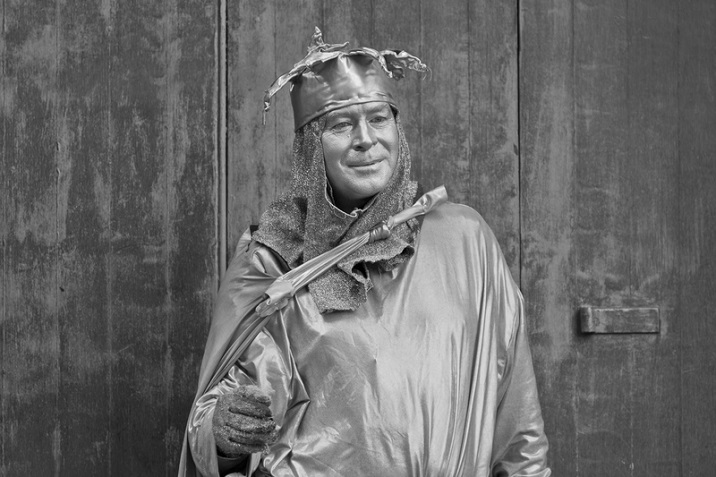
- Collaborative Management Tutorial
- Collaborative Management Home
- Introduction
- Collaboration System
- Leadership Styles
- Collaborative Approach
- Collaborative Tools
- The Arc's Model
- The ESSIM Initiative
- Collaborative System
- Change Management
- Collaborative Project Management
- Project Management Architecture
- Application & Implementations
- Conflict Management
- Case Study
- Useful Resources
- Quick Guide
- Useful Resources
- Discussion
Leadership Styles
Put simply, collaborative leadership is the type of leadership required to get effective and efficient results across internal or external organizational boundaries. A collaborative leader invests time to build relationships, handles conflicts in a constructive manner, and shares control. In contrast, traditional leadership is more autocratic where the leader takes absolute control over his team and takes decisions without consulting his team members.
This chapter describes the difference between traditional leadership and collaborative leadership.


Let’s find out how collaborative leaders differ from traditional leaders when it comes to dealing with Power, Information, Idea Generation, Problem Solving, Resource Allocation, Rules and Responsibilities, and Resolving Issues.
Power
Traditional Leaders − The traditional corporate approach to power is in one singular authority. Old school corporate hierarchy often bestows power based on longevity giving secondary look at prior results.
Collaborative Leaders − The new approach of collaborative leadership recognizes that power is greatest in a collective team. Collaborative leaders allow solutions to develop from the best ideas of the group and take a team approach in problem solving.
Information
Traditional Leaders − They maintain ownership of information as their hallmark. Access to information is power. Releasing information on a “need to know” basis allows traditional leaders to maintain authority and control.
Collaborative Leaders − They believe open information sharing is the cornerstone of success. More the availability of cross training, more will be the opportunities to develop and implement creative approaches to problem solving.
Idea Generation
Traditional Leaders − Traditional managers occasionally entertain suggestions or are open to ideas from their team members. In a top-down hierarchy, the decisions generally come from the executives at the top of the hierarchy, as information is closely guarded and withheld from team members.
Collaborative Leaders − The art of collaboration gives everyone on the team a voice. Leaders are generally open to suggestions and ideas from their team and recognize that brainstorming and different perspectives can bring unique insights.
Problem Solving
Traditional Leaders − In a traditional corporate culture, solutions are generally delivered to team members. There is no active and equal participation of team members.
Collaborative Leaders − In a collaborative environment, solutions are brainstormed among team members and facilitated by the management. They recognize the power of a group approach in solving a problem.
Resource Allocation
Traditional Leaders − The traditional approach to resource allocation is generally reactive. Resources are allocated by the upper management, only when it is badly required and that to when the situation is brought to a committee for approval prior to the deployment. This process takes the focus away from the project and it results in stress being placed on the team by forcing them to deal with issues and challenges without the necessary resources.
Collaborative Leaders − A collaborative environment is based on trust and resources are being delivered proactively.
Team leaders enable their teams to flourish by providing them the required resources and allocating time, quickly.
This allows projects to be developed more rapidly, as employees have access to the corporate resources (time, money, materials) that are necessary to do their jobs effectively and efficiently.
Rules and Responsibilities
Traditional Leaders − Traditional corporate culture relies on a series of policies, rules, and regulations. The culture is followed by a hierarchy that forces the managers and the team leaders to adhere to a specific set of roles and responsibilities.
Collaborative Leaders − In a collaborative environment, teams are encouraged to work together. Information, resources, knowledge, time, and efforts are shared. This allows roles and responsibilities to evolve and fluctuate. Based on the greater good, further responsibilities and power are distributed.
Resolving Issues
Traditional Leaders − In a traditional culture, issues are often dealt with on an individual basis with no regards to the root cause of the problem. Managers spend half the time firefighting instead of instituting beneficial change that could prevent issues.
Collaborative Leaders − The basis of collaborative leadership is trust, because team members are given more responsibility for their work and leaders are often more involved in the process. Collaborative leaders look for the root cause of the conflict as it arises, and address the issues promptly to keep the work moving forward efficiently.
Performance and Feedback
Traditional Leaders − Most traditional corporations practice a semi-annual or annual review process based on corporate policy. If member has had a banner year, but in the last month missed a deadline or a project they were managing encountered some bugs, it can result in a negative performance review and the member may feel they were unfairly judged and may seek greener pastures elsewhere.
Collaborative Leaders − The nature of a collaborative environment means that superiors and the subordinates are equally valued. They work closely together on a daily basis. A collaborative environment is nurturing and offers the opportunity to share knowledge and experience among each other as well as educate members on an ongoing basis.
Skills and Attitudes
There are three essential skills.
Mediation − Collaborative leaders should be able to address a conflict constructively and effectively as soon as it arises. This is a demanding skill. In collaborative leadership, handling conflict and the associated mediation skills are often the number one leadership development priority.
Influencing − Collaborative leaders should be able to share control and choose the best approach in influencing other team members. This requires complete understanding of the organizational culture and personality type of their team members as well as an objective analysis of the business situation to handle.
Engaging others − Skills of networking and relationship building play a major role in successful collaborative leadership. This means communicating with clarity, managing high-stress situations, and involving other team members in decision-making at the right time.
In support of these three skills, collaborative leaders should hold the following three additional essential attitudes.
Agility − Complex collaborative situations require a forward looking attitude of mind, coupled with an ability to quickly assimilate facts and ask incisive questions and take required actions.
Patience − Managing relationships takes time and collaborative leaders need to be able to take a calm and measured approach, reflecting on new information, being supportive, encouraging and giving confidence to others.
Empathy − A collaborative leader must be underpinned by a willingness to truly listen and be open-minded to the views of team members.
Only with these attitudes can the leaders develop a high degree of self-awareness required to accurately assess the impact of their behavior on others.
Traits of Collaborative Leadership
Collaborative leaders share four leadership traits which are discussed here in this section.
Focus on authentic leadership and eschew passive aggressiveness
For a collaboration to succeed, leaders need to be authentic. The most critical attribute for a collaborative leader is the willingness to follow through commitments. This involves the following elements −
First, as a team leader of the department or business unit with people, budgets, and resources under control, one must follow the organizational commitments.
Second, the more a leader focuses on communicating what drives their decision making, the more time they can spend making good decisions instead of arguing with a peer. This leads us to the next leadership trait.
Relentlessly pursue transparent decision-making
Decisions are always about making choices, hence it is critical that leaders are clear about the choices they make.
A collaborative leader should be open and transparent about the answers to three questions − who made the decision, who is accountable for the outcomes of the decision, and is that accountability real?
A leader’s responsibility is to document the key decision paths of his organization and communicate them to his team members as often as he can.
View resources as instruments of action, not as possessions
The promise of flexibility and agility by an organization, inspired by establishing shared goals across organizational boundaries, is only attainable if the leaders back it up by sharing resources as well.
The fundamental enablers of collaborative leadership are viewing resources as tools of action rather than as possessions and aligning their company’s larger shared goals to an accountability system that includes rewards and incentives for working together effectively and efficiently.
Codify the relationship between accountability and rewards
Collaboration demands more distributed and empowered actions across a company. With that empowerment, not only more good outcomes but also increased potential for the bad ones result.
A collaborative leader will need to consider new ways of gaining input from teams on the quality of collaborative decision-making and reward people who consistently make good decisions in a collaborative environment.
Are You a Collaborative Leader?
You can discover whether you are a collaborative leader or not by assessing yourself on the following questions −
Play Global Connector
Are you a part of a global network like ’Youngistaan’ Organization?
Do you regularly blog or tweet employees about trends, ideas, and the people you encounter outside your organization?
How often do you meet with parties outside your organization who are not directly relevant to your immediate job demands or current operations?
Are you on the group of any outside organizations?
How diverse is your immediate team in terms of nationality? Gender? Age? Religion?
Collaborate at the Top First
Do members of your group have any joint responsibilities beyond their individual goals?
Does the compensation of your direct reports depend on any collective goals or reflect any collective responsibilities and duties?
What specifically have you done to eradicate power struggles within your group?
Do your reports have both performance and learning goals?
Show a Strong Hand
Do you manage dynamically—forming and disbanding teams quickly as a situation arises?
Do the right people in your company know they can “close” a discussion and make a decision?
Does your group debate ideas vigorously but then unite behind the decisions made?